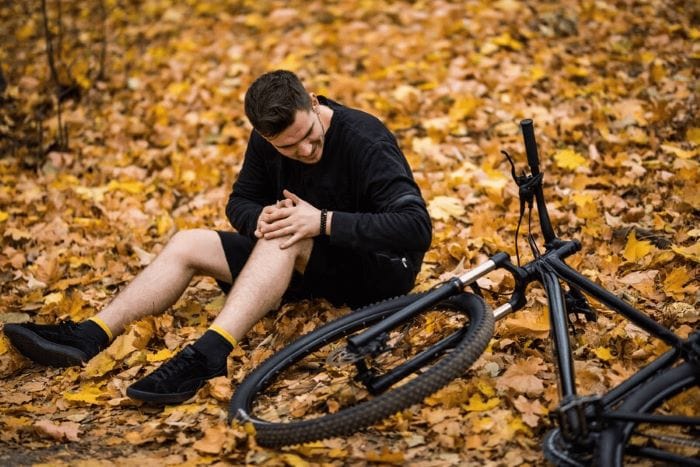
When a peaceful ride turns into a nightmare, the aftermath can be devastating. T-bone bicycle crashes are some of the most dangerous types of bike accidents, often leaving victims with serious injuries and mounting expenses. These collisions, where a motor vehicle strikes the side of a bicycle, usually happen at intersections and are frequently the result of a negligent driver ignoring traffic laws.
As bicycle accidents occur more frequently across Colorado, especially in urban areas like Denver, injured cyclists must know their rights and the legal pathways to compensation. In this article, we will break down the causes of T-bone bike crashes, explain your legal protections under Colorado law, and guide you on how to pursue a bicycle accident claim.
Let’s explore how to protect yourself physically, emotionally, and financially after a Denver bike accident and who’s responsible for covering your costs. If you’re looking for a Denver bicycle accident lawyer, contact us today for a free consultation.
Why T-Bone Bicycle Accidents Are So Dangerous
A T-bone crash, also called a side-impact collision, occurs when the front of a vehicle crashes directly into the side of another, commonly seen when a car runs a red light or fails to yield at an intersection. When the victim is a bicyclist, the damage can be catastrophic.
Common injuries from T-bone bicycle accidents include:
- Broken bones: Fractures in the ribs, legs, and arms are common.
- Spinal cord injuries: These can cause partial or complete paralysis.
- Traumatic brain injuries (TBIs): Even with a helmet, cyclists risk concussions or more serious brain trauma.
- Mental and emotional trauma: Long-term anxiety or PTSD often follows a severe crash.
Unlike occupants of a car, bicycle riders have no metal frame, airbags, or seatbelts to absorb impact. That means even low-speed crashes can lead to severe injuries or even fatalities. According to the Colorado Department of Transportation, many bicycle accidents in urban areas like Denver result in bicyclist fatalities or serious, life-changing injuries, reflecting broader trends in rising traffic-related deaths statewide.
What Colorado Law Says About Bicycle Safety and Fault
Under Colorado law, bicycles are treated as vehicles. This means bicycle riders must follow the same traffic laws as motor vehicle drivers. Likewise, motorists are required to share the road responsibly and yield to cyclists when appropriate.
If a driver violates traffic laws and causes a crash, they can be held liable for the resulting damages.
For instance:
- Colorado Revised Statutes § 42-4-1412 outlines that bicycles have the same rights and duties as other vehicles.
- C.R.S. § 42-4-1008.5 requires motor vehicle drivers to give bicyclists a safe space when passing, which is usually recommended to be at least three feet.
If the driver failed to obey a traffic signal, did not yield the right-of-way, or opened a car door into the cyclist’s path, they may be legally responsible.
Importantly, Colorado uses a modified comparative negligence system (C.R.S. § 13-21-111), which allows accident victims to recover damages even if they were partially at fault, as long as they were less than 50% responsible.
Who Pays After a T-Bone Bike Accident?
When a T-bone bicycle accident case occurs, figuring out who pays for the damages is often a complicated process. If a negligent driver caused the crash, their insurance company should cover your losses.
These may include:
- Medical bills and hospital stays
- Future medical expenses related to rehabilitation or surgeries
- Lost wages from time off work
- Pain and suffering, such as emotional trauma
However, insurance companies often attempt to downplay your injuries or push you to admit fault. That’s why medical records, witness statements, and photographic evidence from the scene are crucial in building a strong bicycle accident claim.
In personal injury cases, you must prove that the other party’s negligence directly caused your injuries and financial losses. Having a clear trail of documentation from initial hospital bills to ongoing treatment for severe injuries like spinal cord injuries or traumatic brain injuries helps establish the true impact of the crash.
Why You Must Act Quickly: Time Limits and Legal Deadlines
Under Colorado personal injury law, you generally have three years to file a personal injury claim after a bicycle crash involving a motor vehicle. This is outlined in C.R.S. § 13-80-101. Failing to act within this window can result in losing your right to seek compensation entirely.
In cases involving fatal bicycle accidents resulting in a wrongful death, the statute of limitations is two years (C.R.S. § 13-80-102(1)(d)). If a loved one was killed in a T-bone bike crash, eligible family members of bicycle accident victims must act quickly to preserve evidence and file the necessary documents within this time frame.
Even if your bicycle accident injuries seem minor at first, conditions like internal bleeding or head trauma can worsen over time. Always seek medical attention immediately after a bike accident to protect your health and your legal rights.
Building Your Case: What Injured Cyclists Should Do Next
After a T-bone cycling accident, your actions can make or break your case.
Here’s what every cyclist should do:
Seek medical attention: Get evaluated right away, even if you feel fine.
Gather evidence: Take pictures of the scene, your injuries, and the vehicle.
Collect witness information: Statements from bystanders can support your account.
File a police report: This provides an official record of the incident.
Preserve medical records and receipts: These prove your medical expenses and treatment journey.
Even though accidents happen, the law is on your side. By taking prompt action and following the right steps, you strengthen your claim and improve the likelihood of a fair resolution by taking immediate legal steps and gathering strong evidence.
Getting the Legal Support You Deserve
While the law allows you to file a claim on your own, handling personal injury claims can be overwhelming, especially while recovering from serious injuries. An experienced bicycle accident lawyer understands the complexities of Colorado personal injury law and can help you avoid costly mistakes.
They can also deal directly with insurance companies that may otherwise try to minimize your payout. With professional help, many bicycle accident victims have observed more favourable outcomes.
From fighting for coverage of your hospital bills to ensuring compensation for future medical expenses and lost wages, an experienced bicycle accident attorney becomes your advocate.
You Deserve Justice After a Denver Bike Crash
T-bone bike crashes or bicycle accidents in Denver can alter the course of your life in an instant. But with the right knowledge and support, you can hold the negligent driver accountable and recover the damages you’re entitled to under Colorado law. Whether you’re dealing with common injuries like broken bones or facing long-term challenges from spinal cord injuries, you shouldn’t have to carry the burden alone. You need a compassionate, experienced personal injury attorney on your side.
Bourassa Law Group stands ready to help injured cyclists handle the aftermath of a crash. Our Denver bicycle accident attorneys understand how deeply these accidents affect your life physically, financially, and emotionally. If you or a loved one has been injured in a bicycle crash, let us review your accident claim and help you pursue the fair compensation you deserve.
Contact us today for a free consultation. We’re here to listen, support, and fight for you every step of the way as your bike accident lawyers.





